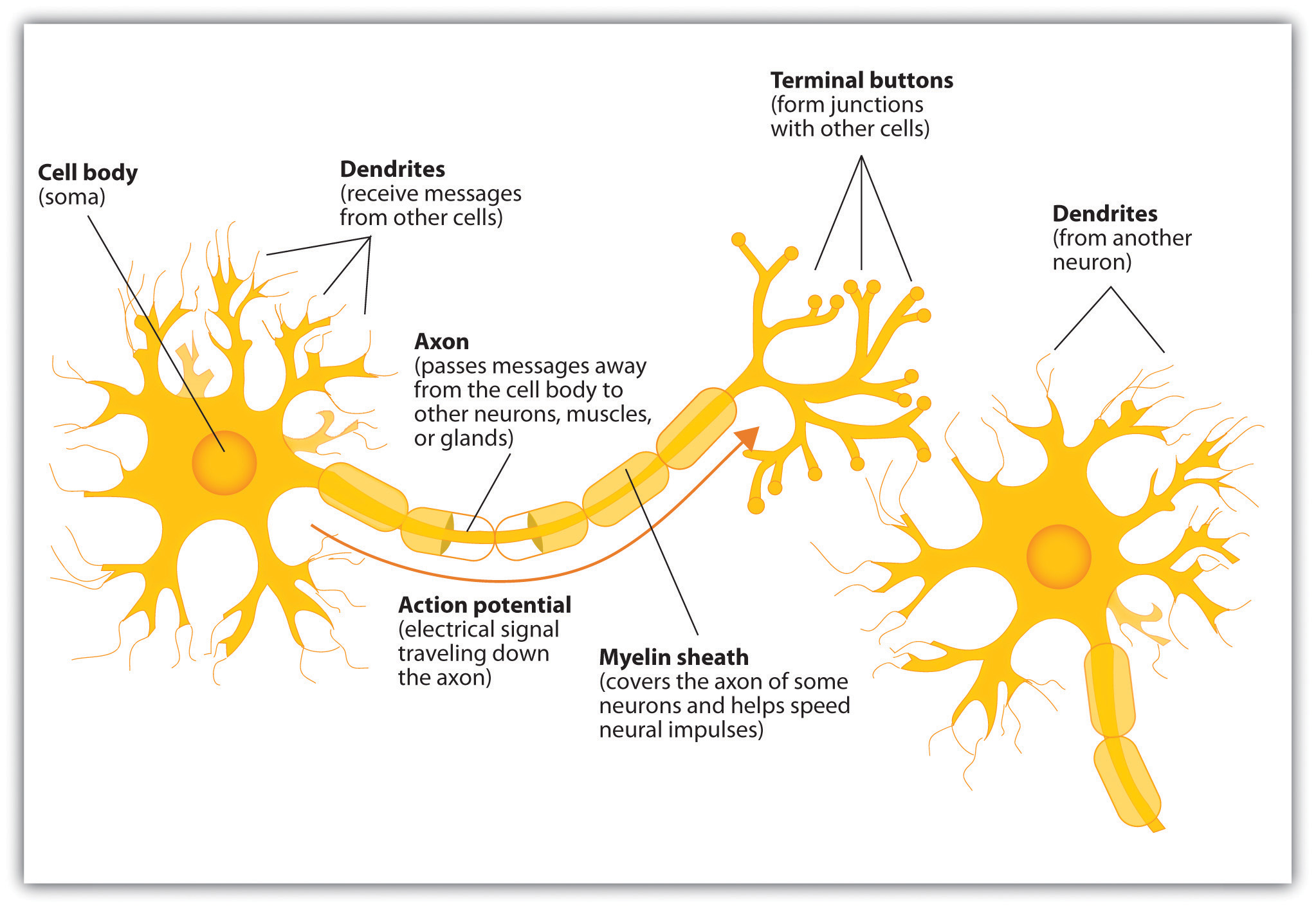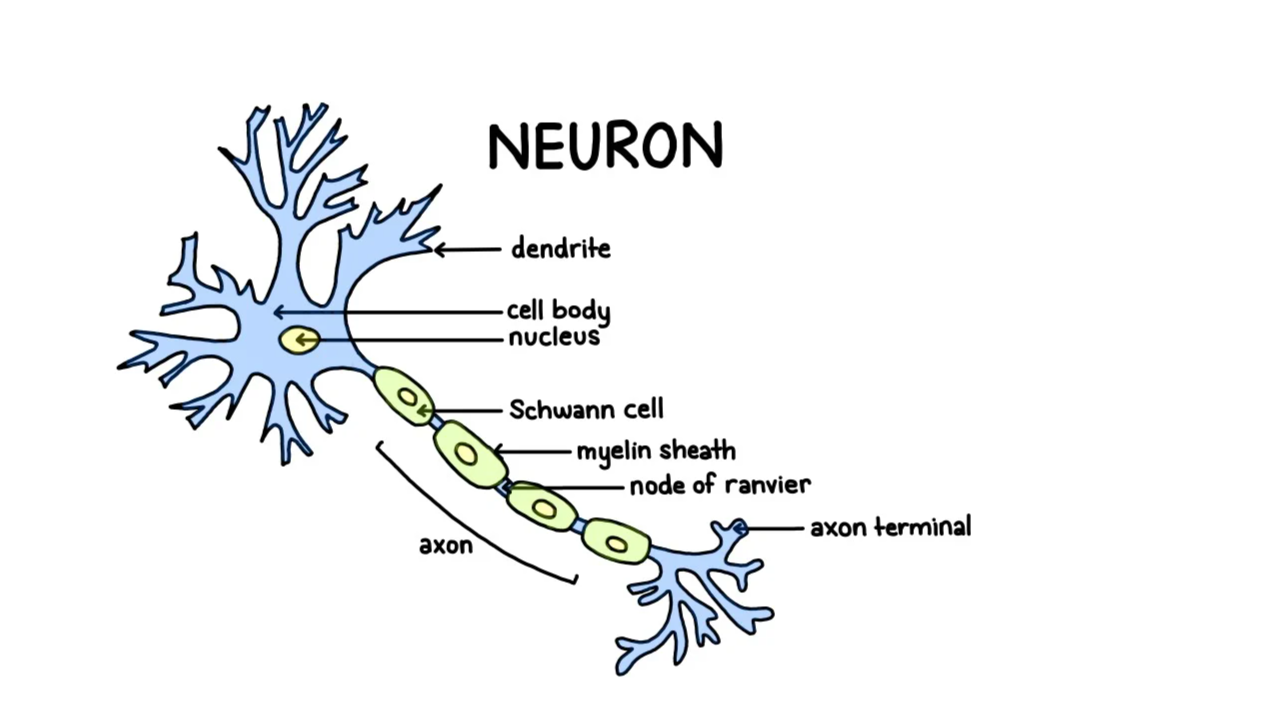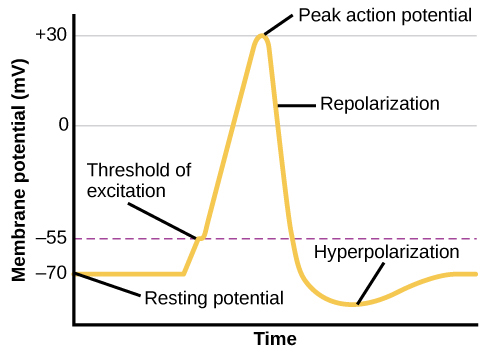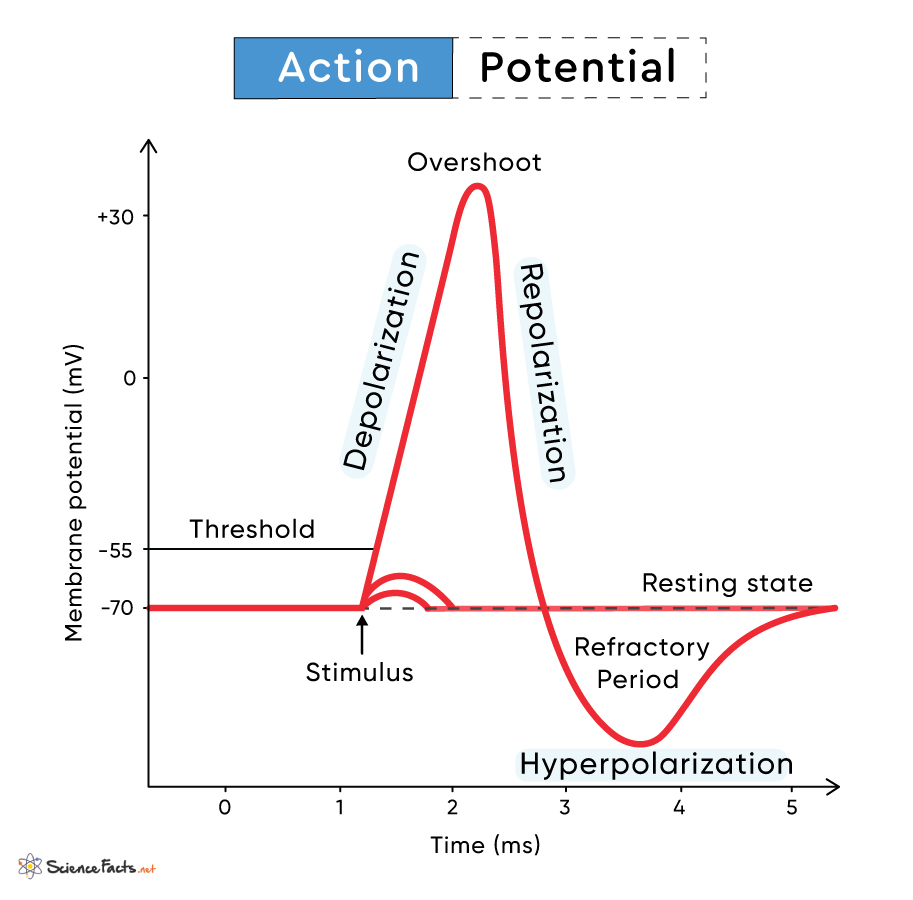Psychology Unit 1
Biological Bases of Behavior
Psychology Overview
Psychology: The science of behavior and mental processes.
Behavior: Any observable action an organism does.
Mental Processes: Internal, subjective experiences (sensations, perceptions, dreams, thoughts, beliefs, feelings) that cannot be observed.
Central Principle: Everything psychological is also biological. Every thought, mood, action, and urge is due to an internal biological event.
The Nature-Nurture Issue
The most persistent debate in psychology, focusing on the relative contributions of genes (nature) and experience (nurture) to psychological traits and behaviors.
Modern View: Traits and behaviors are seen as an interaction between nature and nurture.
Natural Selection
Definition: Inherited traits that enhance survival and reproduction in a specific environment are more likely to be passed on to future generations.
Proposed by: Charles Darwin in The Origin of Species (1859).
In the 20th century, this theory was misused to justify discriminatory ideas, such as eugenics (selective breeding to promote specific traits).
Branches of Psychology
Evolutionary Psychology
Studies the evolution of behavior and the mind using natural selection principles.
Focuses on how humans are alike.
Behavior Genetics
Studies the influence of genetics and environment on behavior.
Focuses on how humans differ.
Concept: "Nurture works on what nature provides" — biology sets the framework, and the environment shapes it.
Example: A person may be biologically predisposed to depression (nature) and grow up in poverty (nurture), increasing the likelihood of developing depression.
Evolutionary Psychology: Understanding Human Nature
Goal: To explain behavior tendencies using natural selection.
Organisms' varied offspring compete for survival.
Certain traits increase reproductive and survival chances.
Survivors pass their genes to the next generation, leading to changes in population characteristics over time.
Natural Selection & Adaptation Example
Dmitry Belyaev's Experiment:
Mated 100 female foxes and 30 male foxes, selecting and mating the tamest 20% of offspring.
Over 40 years, this selective breeding led to a new, tamer breed of foxes.
Mutation and Genetic Adaptation
Mutation: A random error in gene replication that causes a change.
If a mutation has a positive effect, it increases the likelihood that the mutated gene will be passed on.
Genes provide the capacity to adapt to new environments; when combined with experiences, they enhance fitness (ability to survive and reproduce).
Evolutionary Success and Human Similarities
Only 5% of genetic differences among humans come from population differences; 95% of genetic variation exists within populations.
Differences between two individuals from the same population (e.g., two South Africans) are often greater than the average difference between individuals from different populations (e.g., a South African and a Singaporean).
Behavior Genetics: Predicting Individual Differences
Behavior Geneticists: Study the genetic and environmental origins of human differences.
Focus on the interaction between:
Environment: All non-genetic influences, from prenatal nutrition to experiences with people and surroundings.
Heredity: The genetic transfer of traits from parents to offspring.
Genes: Biochemical units of heredity.
Genome: Complete set of genetic instructions for making an organism.
Common sequences in human DNA are what make us human, but we share 96% of our DNA with chimpanzees.
Key Point: Many genes of small effect influence our differing traits.
Twin and Adoption Studies
Used to understand the impact of nature (genetics) and nurture (environment).
Identical (Monozygotic) Twins: Develop from a single fertilized egg that splits, creating genetically identical individuals.
While they have the same genes, they may not have the same number of gene copies.
About one-third of identical twins have different placentas, affecting their prenatal environment.
Fraternal (Dizygotic) Twins: Develop from separate eggs and are genetically no closer than regular siblings, but share a prenatal environment.
Behaviorally and physically, identical twins are more similar than fraternal twins.
Studies use identical twins separated at birth to measure environmental impact.
Key Point: Shared family environments have little effect on personality, but parenting does influence other factors.
Gene-Environment Interaction
Interaction: The interplay between heredity and environment, where the effect of one factor depends on the presence of another.
Epigenetics: The study of how environmental factors (e.g., diet, drugs, stress) can influence gene expression without changing the DNA sequence.
These changes can be passed down through generations (e.g., stress effects on Holocaust survivors).
Parts of the Brain
Frontal Lobe
Movement of the body
Personality
Concentration, planning, problem solving
Meaning of words
Emotional reactions
Speech
Smell
Parietal Lobe
Touch and pressure
Taste
Body awareness
Occipital Lobe
Sight
Cerebellum
Fine motor (muscle) control
Balance and coordination
Temporal Lobe
Receive & processes sound
Recognizing faces
Emotion
Long term memory
Limbic Lobe
Located inside the brain
Controls emotions like happiness, love, and sadness
Corpus Callosum
Connects the two hemispheres
Hypothalamus
Master part of the brain
Pituitary Gland
Gland “Master Gland” - controls growth
Pons
sleep, coordination & facial expressions
Medulla
life functions
“RAS” - Reticular Activating System
regulates arousal
Thalamus
routes all incoming senses except smell
Hippocampus
process explicit memories (facts & events)
Amygdala
Linked to fear, anger & aggression
Wernicke’s Area
Comprehension of language & speech
Broca’s Area
controls productions of speech
Neurons Role & Function


Parts of A Neuron
Dendrites - branch-like structures that receive signals from the neurons
Soma - also known as the cell body, is the main part of a neuron were info is processed
Axon - A long, thin fiber that carries electrical impulses away from the cell body to other neurons
Myelin Sheath - A fatter layer that insulates the axon, speeding up the transmission of signals.
Terminal Buttons The end of axon where neurotransmitters are released into the synapse
Synapse - also known as cleft or gap, the crucial gap between neurons where communication occurs.
Neurotransmitters - Chemical messengers released by the terminal buttons that cross the synapse to transmit signal to the receiving neuron.
Synaptic Vesicles - Found within the axon terminal of presynaptic neuron. Stores and releases neurotransmitters when stimulated by an action potential.


Important Neurotransmitters
Excitatory Neurotransmitter - chemical secreted at terminal button that causes the neuron on the other side of the synapse to generate an action potential (to fire).
Inhibitory Neurotransmitter - chemical secreted at terminal button that reduces or prevents neural impulses in the postsynaptic neuron
Neurotransmitter | Functions | Effects of Excess/Deficit |
Acetylcholine |
| Excess - may be linked to depression Deficit - Dementia & Alzheimer’s disease |
Dopamine |
| Excess - Schizophrenia Deficit - Parkinson’s disease |
GABA (gamma-aminobutyric acid) |
| Excess - seizures, insomnia Deficit - anxiety disorders |
Endorphins |
| Deficit - may be involved in addiction |
Serotonin |
| Deficit - depression and same anxiety disorders (especially OCD) |
Epinephrine/Norepinephrine |
| Excess - high blood pressure. Too much norepinephrine has been linked to schizophrenia Deficit - Depression |
Glutamate |
| Excess - Multiple sclerosis Excess - Seizures & Migraines (Avoid foods with MSG - monosodium glutamate; overstimulate brain) |